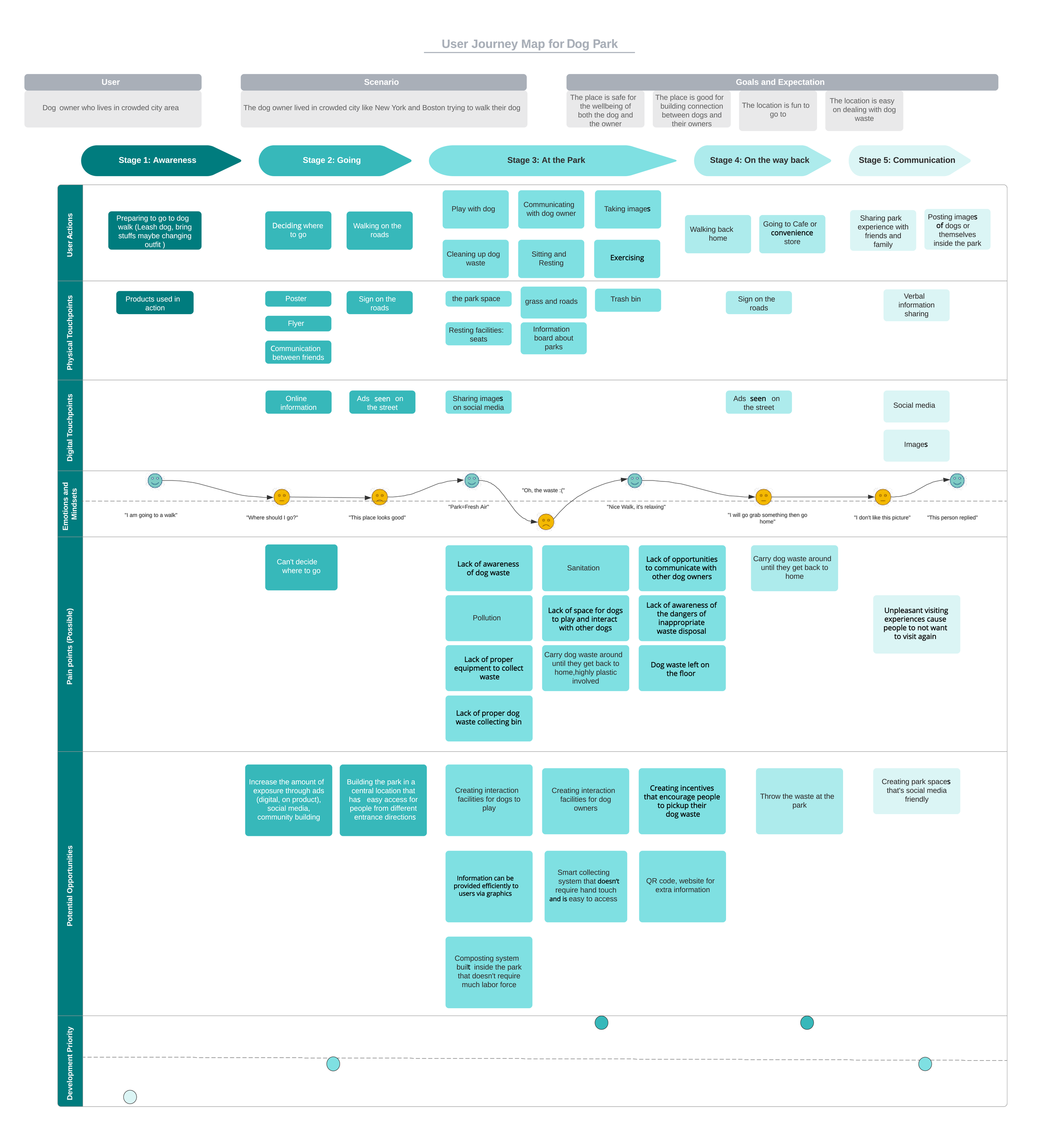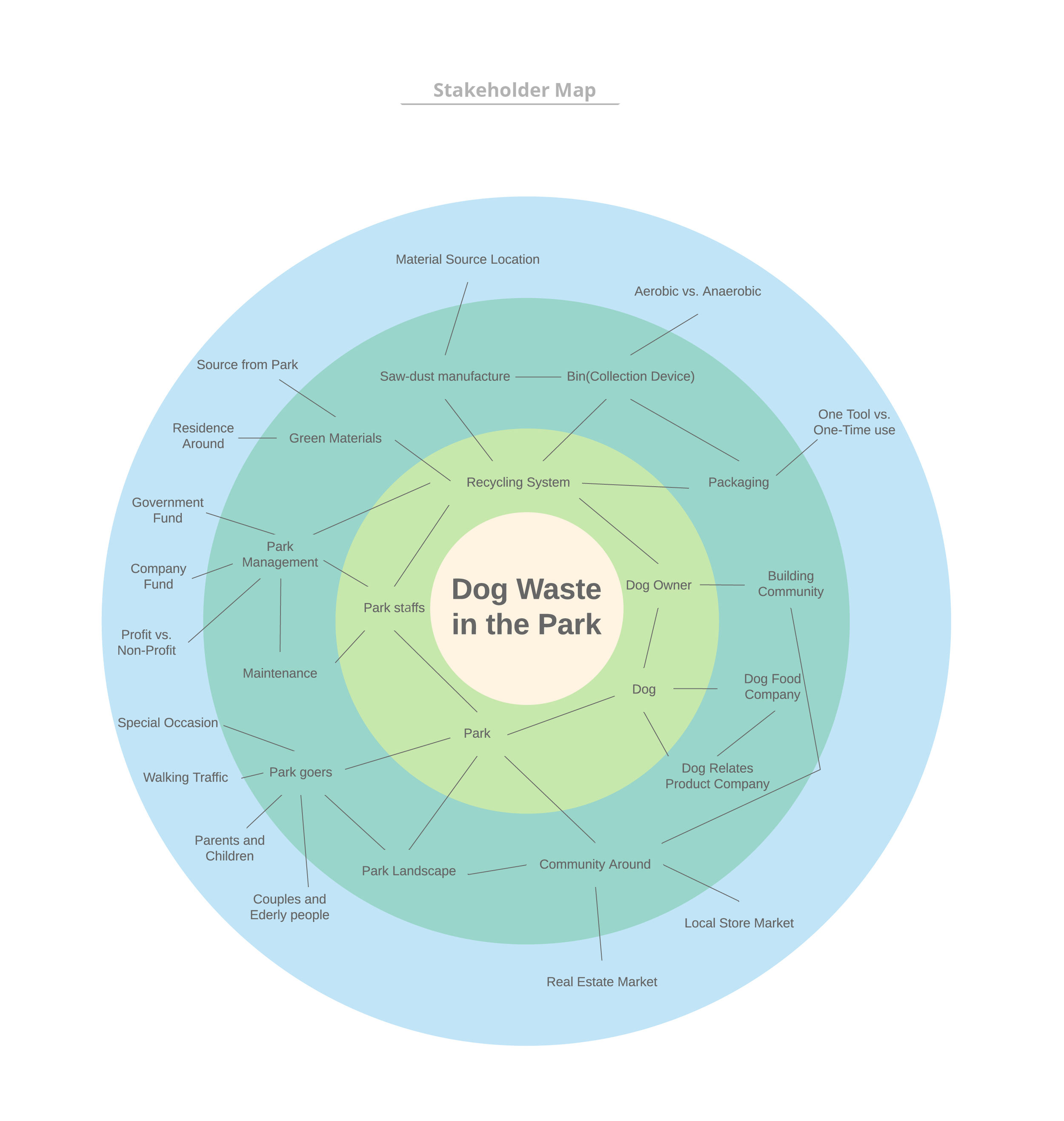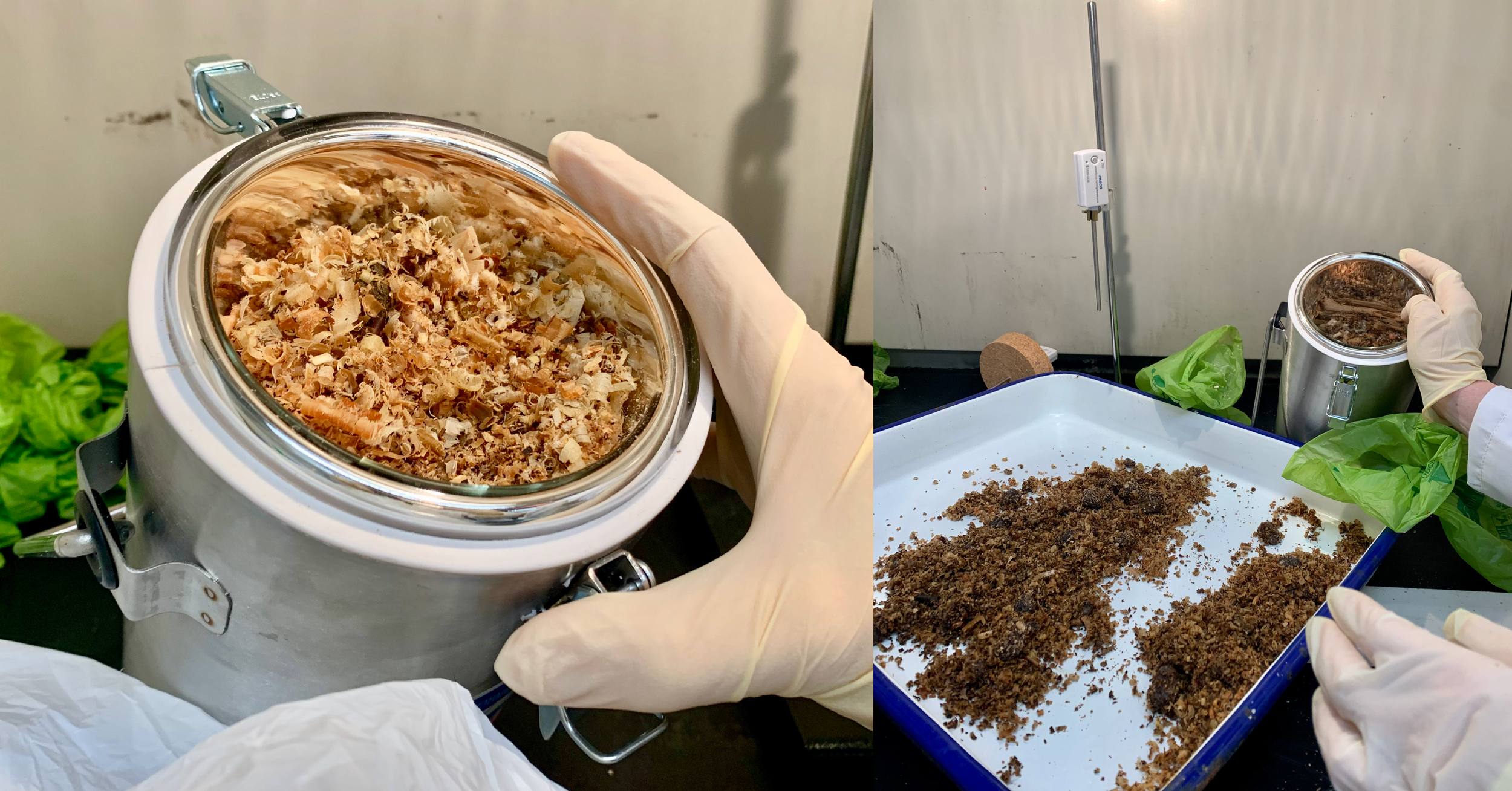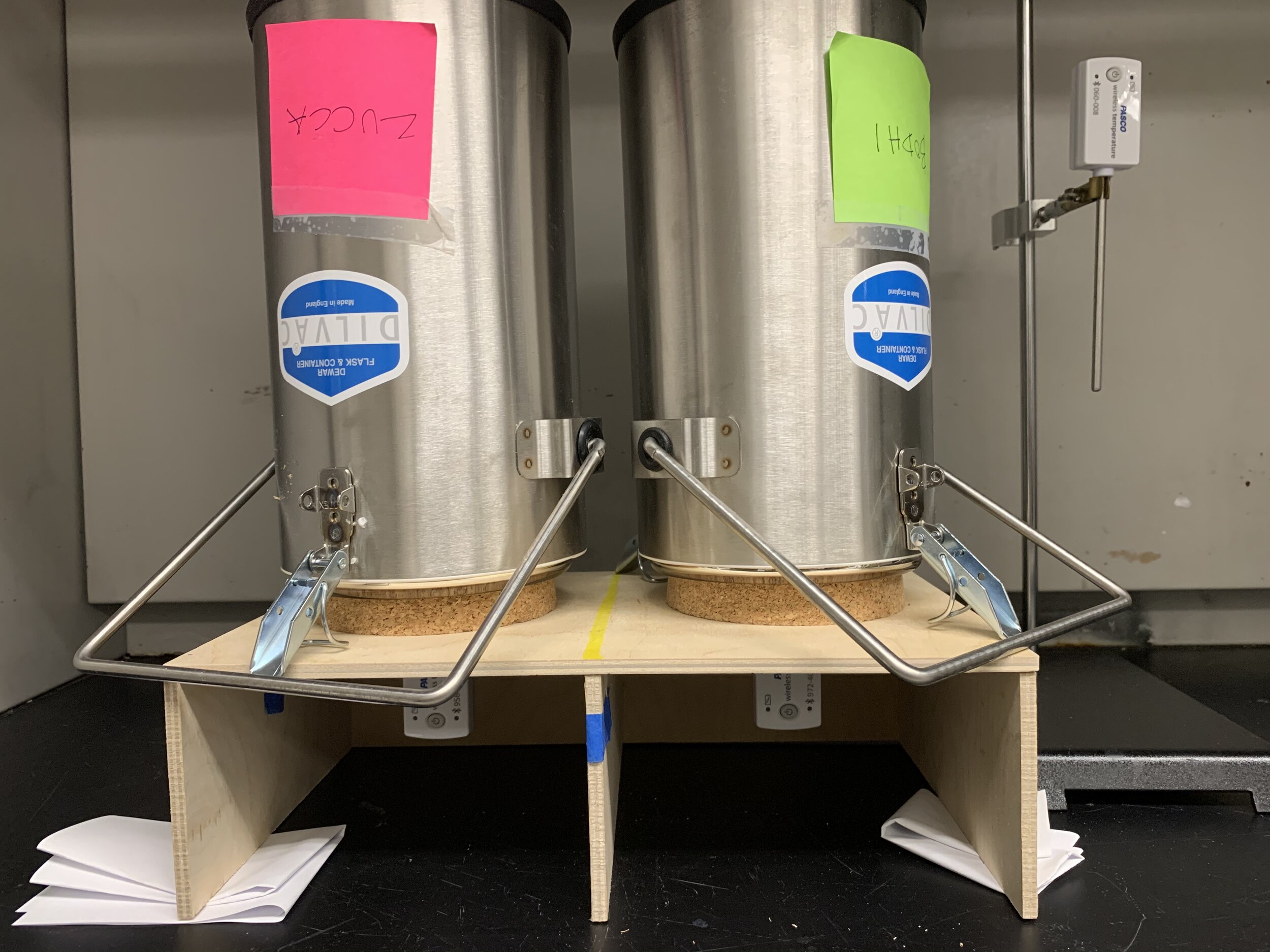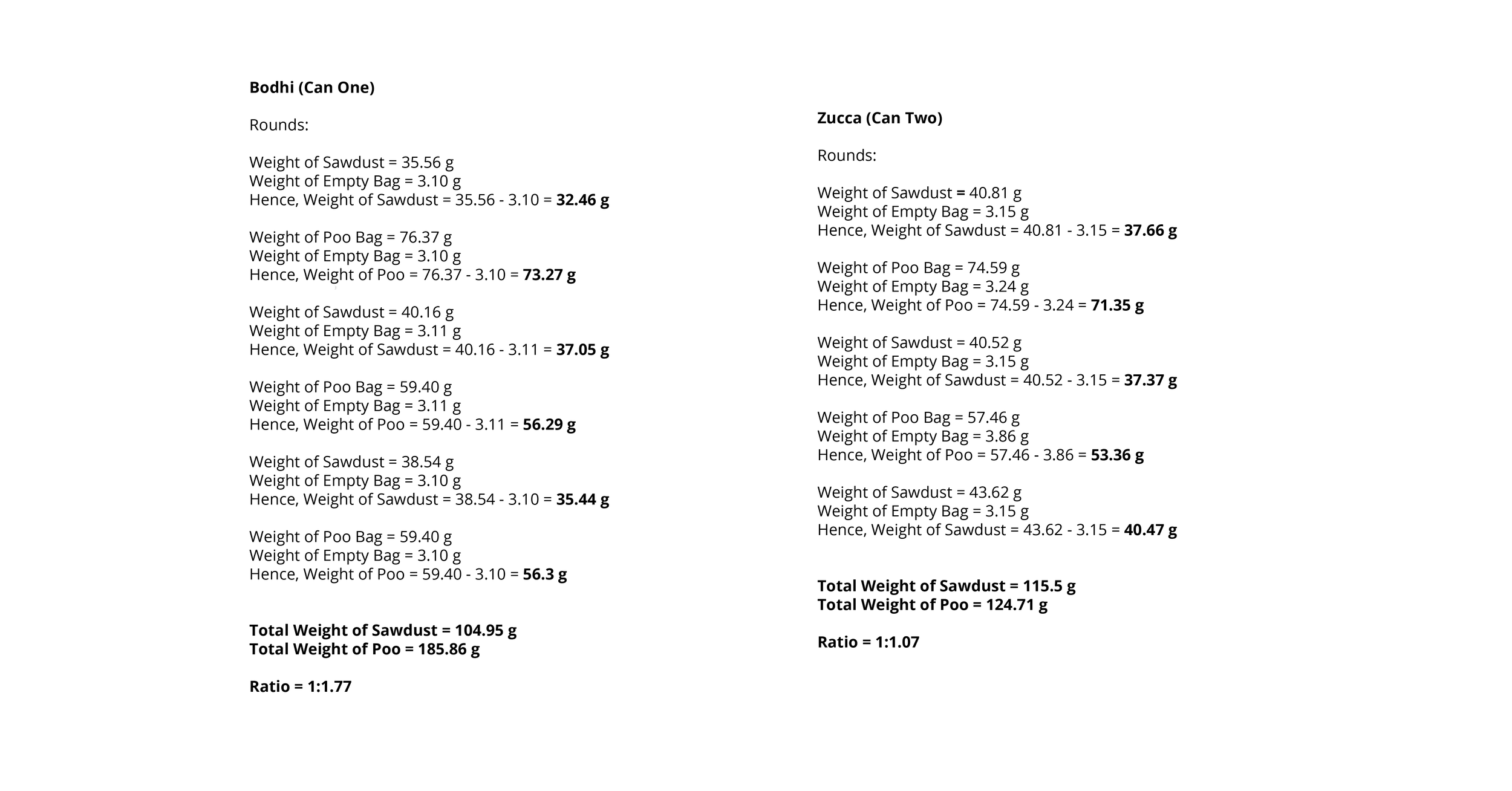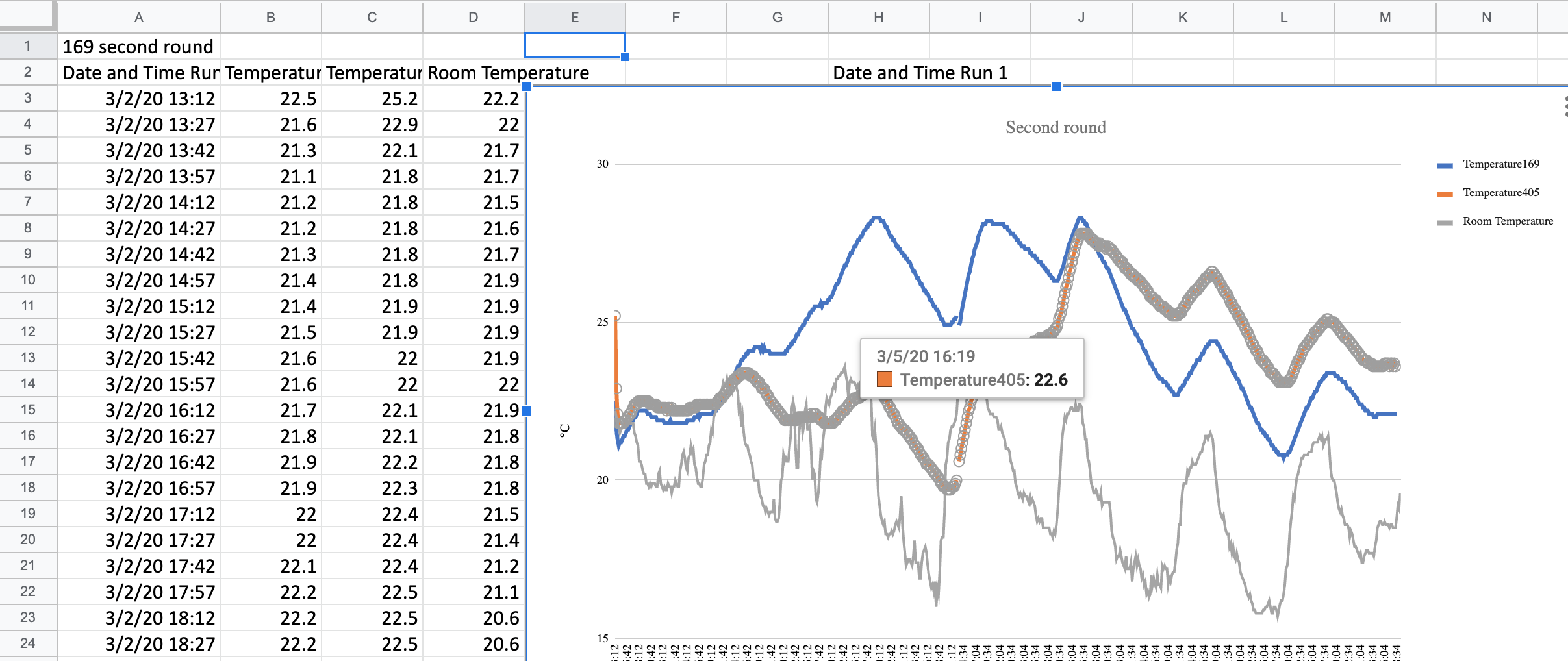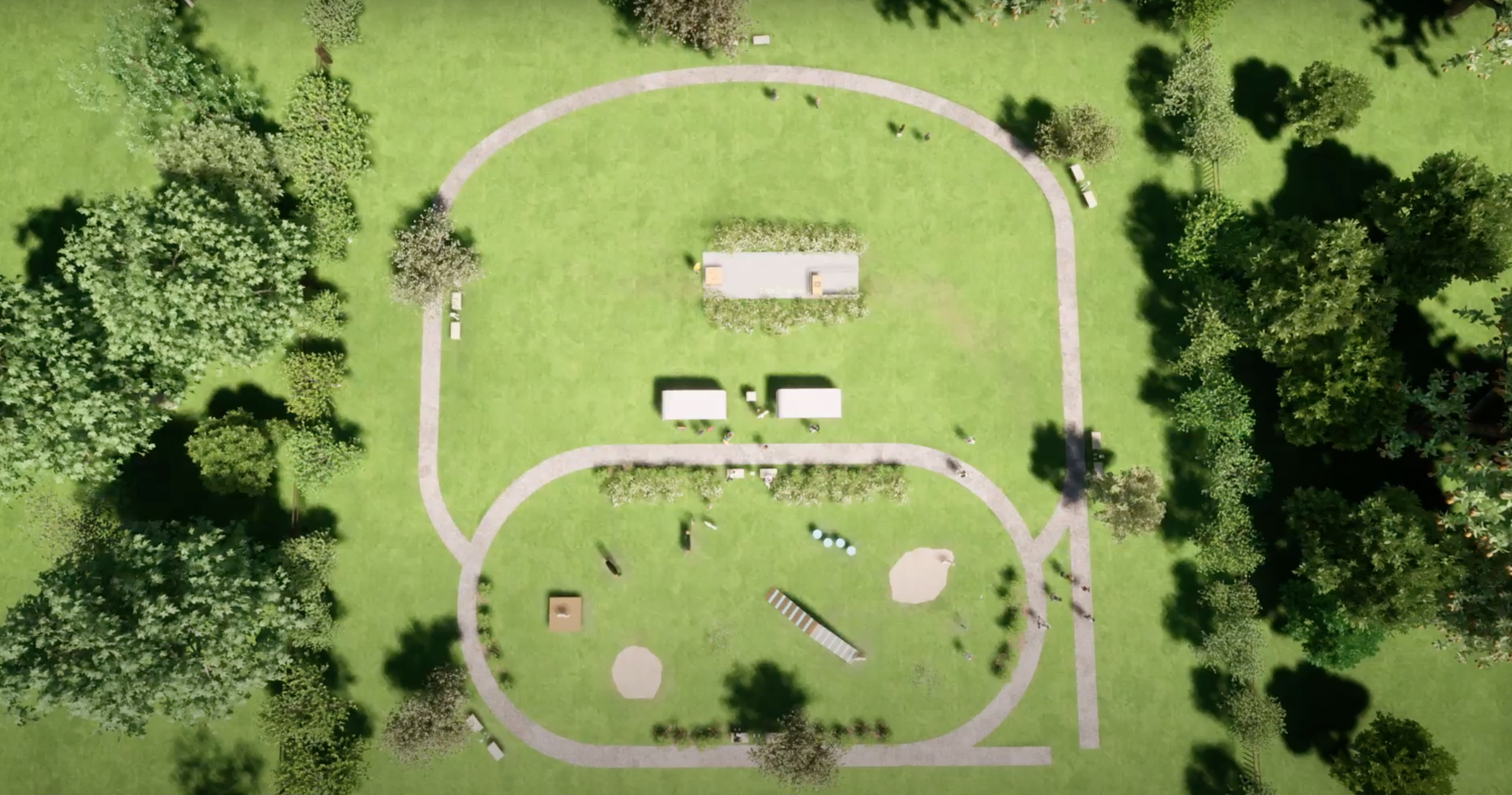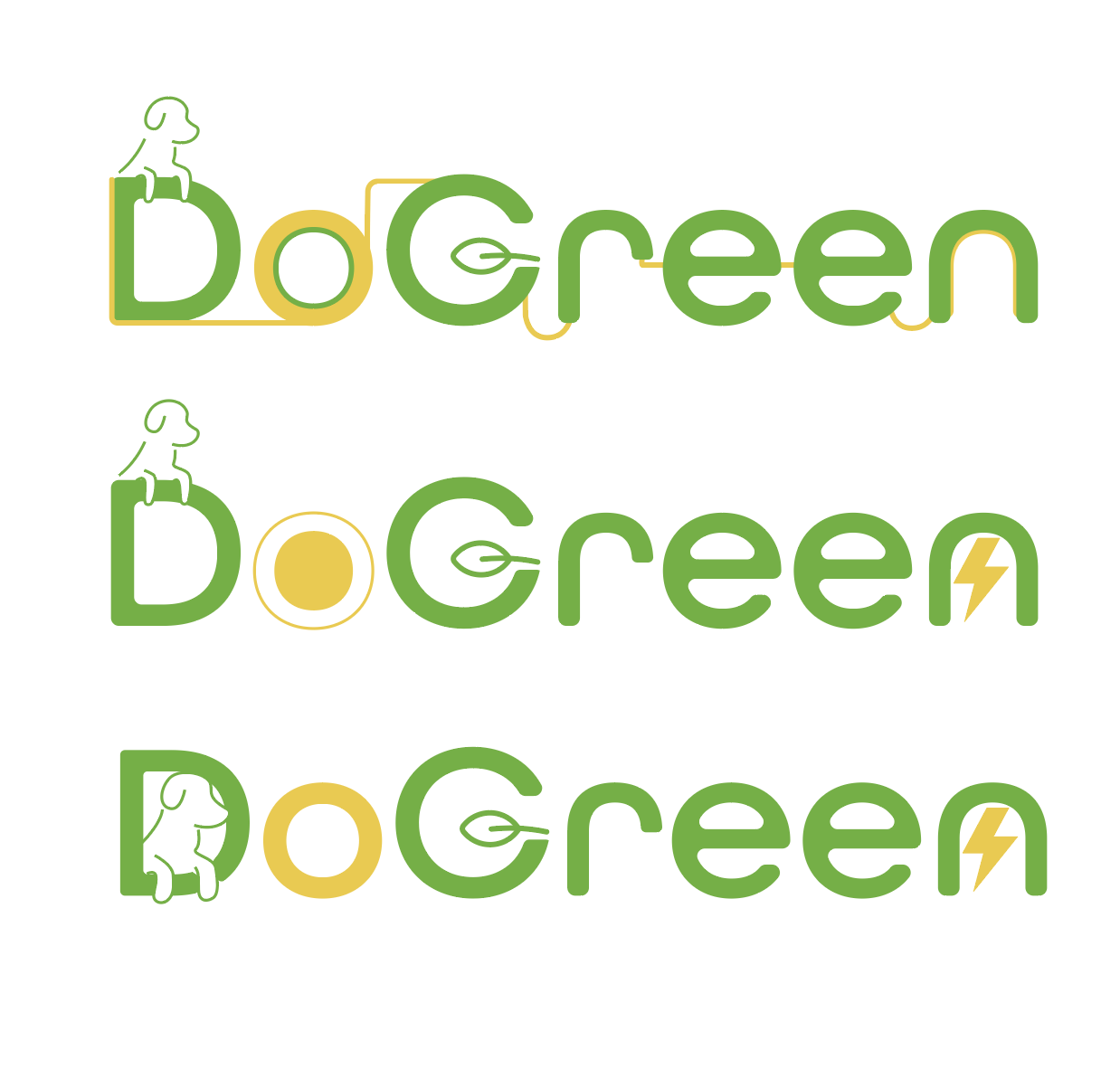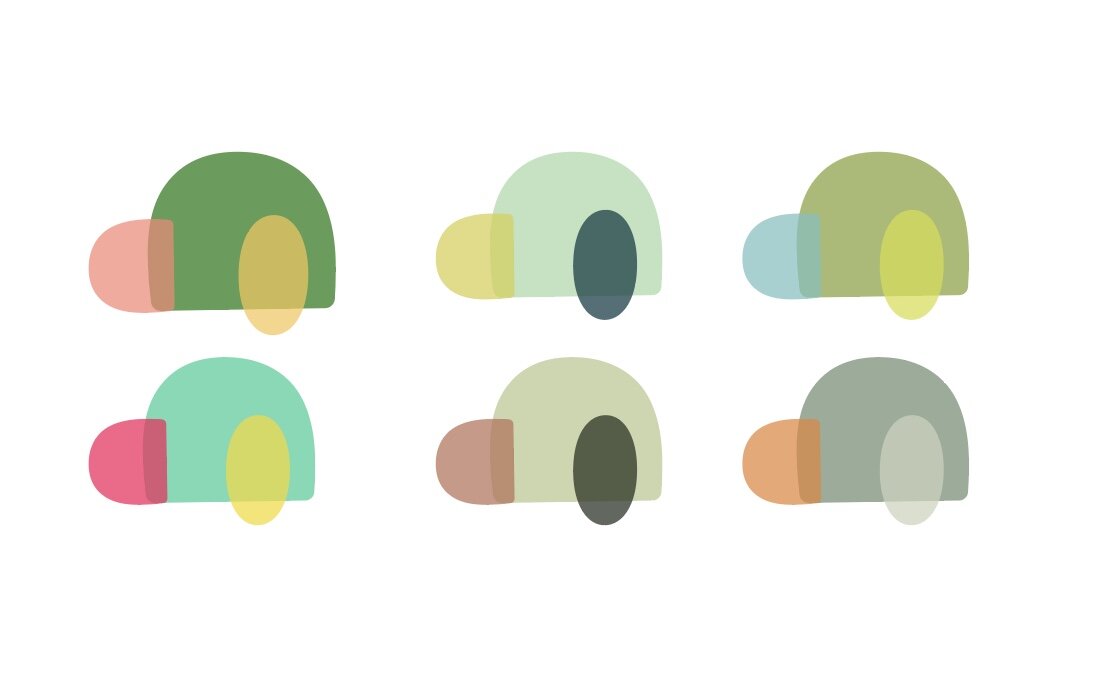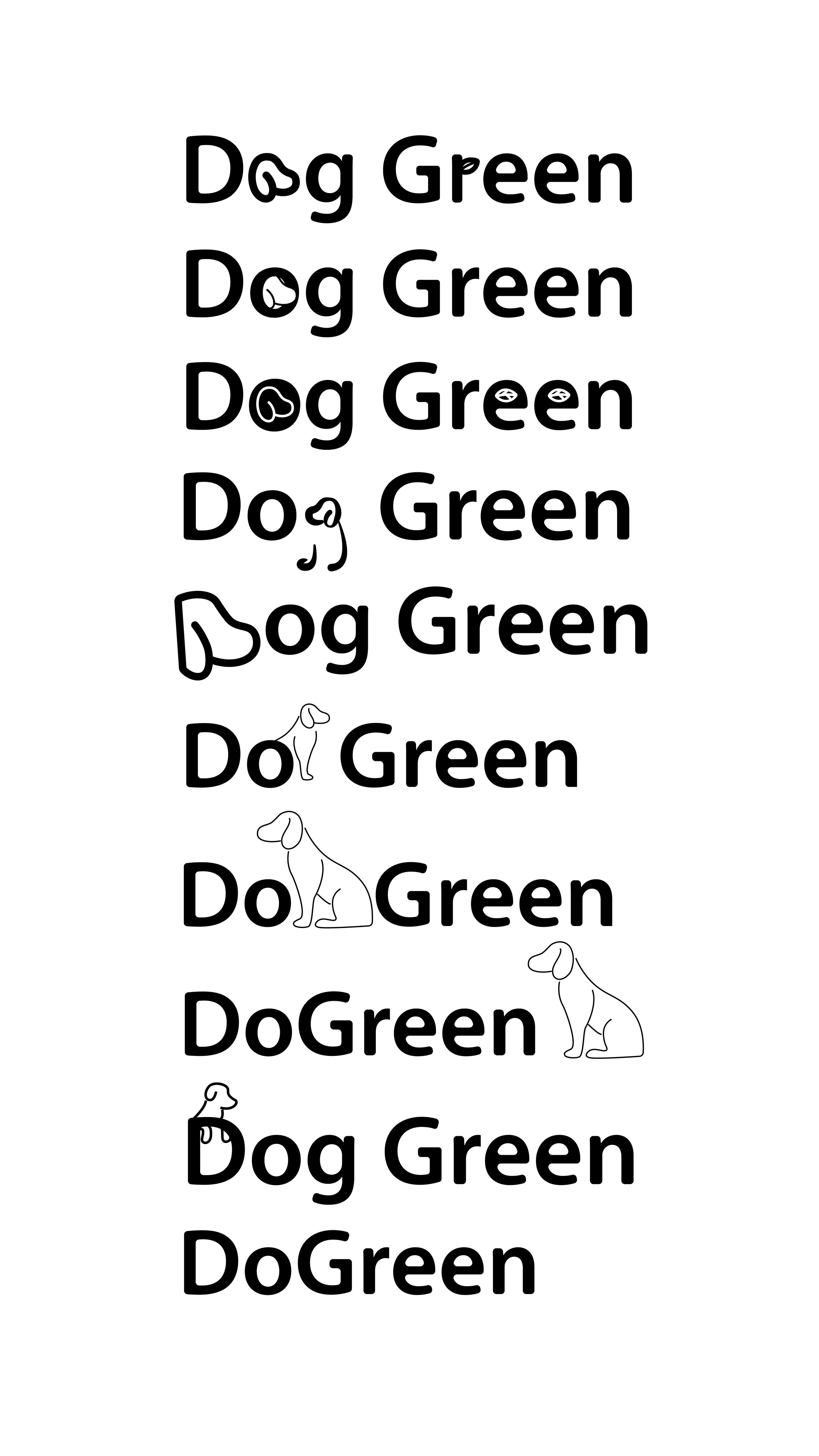
DOGREEN
Team
Chengqi Hong, Chenyu Ding, Chenxi Mao, Emilia Matarese, and Kaanchi Chopra
Role
Research, Concept Development, Visual Design, CAD, Marketing
Tools
Rhino, Keyshot, Adobe Illustrator, Adobe Premiere Pro
Duration
10 weeks
Challenge
In the United States alone, dogs produce over 10 million tons of waste every year, much of which is disposed off incorrectly. This rarely considered source of pollution can pose threats to both human and environmental health. How can we make dog waste useful and desirable?
Solution
The DoGreen Project provides a systematic and sustainable solution to waste management in urban dog parks. Through anaerobic digestion, we can harness the power of microbes to create energy from waste; energy that is then used to grow food in the urban landscape.

Watch the full video and learn more at dogreenproject.com
PROCESS
We followed the Double Diamond model to organize our thoughts. The four stages of Discovery, Definition, Development and Delivery, helped us truly understand what the problem is and how we can solve it. It’s important to note that design is not a linear process. The back and forth arrows below depict the iterative nature of our decision-making.
DISCOVER: a deep dive into the problem we are trying to solve.
PRELIMINARY RESEARCHWe started our research process with the core challenge that dog waste poses threats to human and environmental health. To understand the problem of dog waste in public settings, we developed User Journey Map with Pain Points, and Stakeholder Map to understand the experiences of all community members who are affected by dog waste. We evaluated the problems the current dog waste disposal has in parks, and started defining some of the issues around society, environment and experiences.
After settling on urban parks as our target location, we conducted Market Research, User Experience and Psychology Research, Biology Research, and Interviews to further understand the existing systems in play.
LAB RESEARCH: COMPOSTING DOG WASTE We began to experiment with aerobic digestion, adding sawdust and water to the dog waste samples in a dewar cylinder and used a temperature probe to detect the microbial activity. We learnt that an even level of moisture and turning action are essential for composting. Through research, we found there is another way to digest organic waste, which is anaerobic.
DEFINE: synthesize the information from the discovery phase into a problem definition.
An anaerobic system could give us more design opportunities because the process produces methane, which can be used as a fuel to produce heat, light, and/or electricity.
The big difference between aerobic and anaerobic is the absence of oxygen in the process. Organic waste is first put in water to go through Hydrolysis. This process makes complex organic molecules break down into simpler ones. Then the Acidogenesis and Acetogenesis break them into fatty acids and acetic acid. Finally, the Methanogenesis is where the methanogens get their food and produce methane.
We defined our design brief - How can Biology solve the problem of dog waste?
DEVELOP: think up solutions for the problem.
We then began to brainstorm potential ways of using the energy harnessed at the scale of a dog park. The final round of voting on our ideas presented our winner - generating a micro farm market among other ideas like powering a food truck, providing shelter to homeless dogs, and having auto-hand sanitizers around the park.
After we had our chosen idea, through planning and sketching, we landed on our final system.
DELIVER: pick the best solution and build that.
Key Insights
Through the process of interviewing stakeholders (dog owners, biogas plant owners, park’s management staff, residents) we found out these key problems:
The challenge of compost systems: Existing solutions like dog waste bin or compost bin provide means to deal with the dog waste, but fail to provide a strong incentive for dog owners and park management to cooperate.
Problems like the lack of awareness, poor disposal facilities and high management cost also have contributed to ineffective dog waste management.
In many cases, picking up, disposing and managing the waste is a psychological and economic burden for dog owners.
Stakeholders do not witness the impact of their contribution, and hence don’t feel motivated to keep picking and throwing waste.
Design Principles
With our research and insight in mind, we built on a list of design objectives which would define our system:
At the heart of our solution is to make dog waste disposal not only sustainable, but also desirable.
The local system serves as a center for disposal, regeneration, education, and community engagement.
By synthesising the needs and realities of all stakeholders, the system invites and excites them to be a part of our unique bio solution.
It breaks the stigma associated with waste, and shows the power of collective action in waste management.
FINAL SYSTEM

The cycle begins once the dog owners pick up the waste using biodegradable bags from the bag dispenser and dispose it in our bin.
The bag dispensers are spread throughout the park, placed beside the benches for easy access.
The bag with the waste then enters an anaerobic digestion chamber, where methane produced in the oxygen-starved environment is captured and then burned to generate electricity.
System infographic showing the process of anaerobic and aerobic digestion that takes places in underground digestion chamber in the park.
View of the digestion chamber from the top with hatches to access underground system.
Underground digestion chamber.
The digestion facilities are designed for easy access and maintenance. The park management dumps the waste, closes the cover and then pulls the slider open such that the underground system is not exposed in air.
The biogas production and 𝐞𝐥𝐞𝐜𝐭𝐫𝐢𝐜𝐢𝐭𝐲 𝐠𝐞𝐧𝐞𝐫𝐚𝐭𝐢𝐨𝐧 𝐬𝐲𝐬𝐭𝐞𝐦 is placed underground with access hatches so it can be easily maintained when needed, while protecting it from potential vandalism. A 𝐫𝐚𝐦𝐩 for the cart to park in front of the aerobic chamber is designed for the compost to be removed and distributed in the public park.
Batteries store the electricity, providing a steady source of power to an onsite micro-farm where microgreens are grown and harvested.
The design of the micro-farm invites the park visitors to walk inside. Infographic boards educate them, and fold up tables tables are designed to load the microgreens when harvested.
The microfarm’s produce is sold both on-site and at local community events, providing management with a source of revenue to support maintenance and care of the system, while encouraging our visitors on the importance and benefits of “scoop-the-poop”.
The blackboard in the market sale will introduce the week’s crop.
An infographic highlighting the details of the microfarm and greens.
Sustainable and recyclable packaging is designed for the microgreens which includes description and infographics of our system.
Close-up of the packaging design.
The dog playground surrounding all the facilities is constructed with and around nature and sustainable materials to provide a safe and free space for all dogs. This was designed keeping in mind 3 major keywords - agility, stimulation and interaction. The trees and plants here would receive fertilizers produced by the aerobic compost system.
Bird’s-eye view of the park.
BRANDING
PROCESS: We sketched different iterations, and experimented with geometry, typography and free-flowing strokes. After a few rounds, we merged the two consecutive Gs in Dog Green while keeping the simplicity of a dog icon rising above the letter D. For the final palette we were inspired by nature - by the colors of a sunflower.
MARKETING

The DoGreen Project shows how environmentally and socially rewarding picking up your dog waste can be.
The zero-waste cycle promotes collective action in waste management, and provides users a center for disposal, regeneration, education, and community engagement.
REFLECTION
Our next steps include proposing our biodesign solution to Prospect Park and local government, followed by reaching out to other cities with high dog populations. Our system is designed for longevity because it’s easy to maintain and profitable. However, because the system depends heavily on the volume of the waste, the importance of user compliance and steady waste supply can affect the functioning and maintenance of the park.


